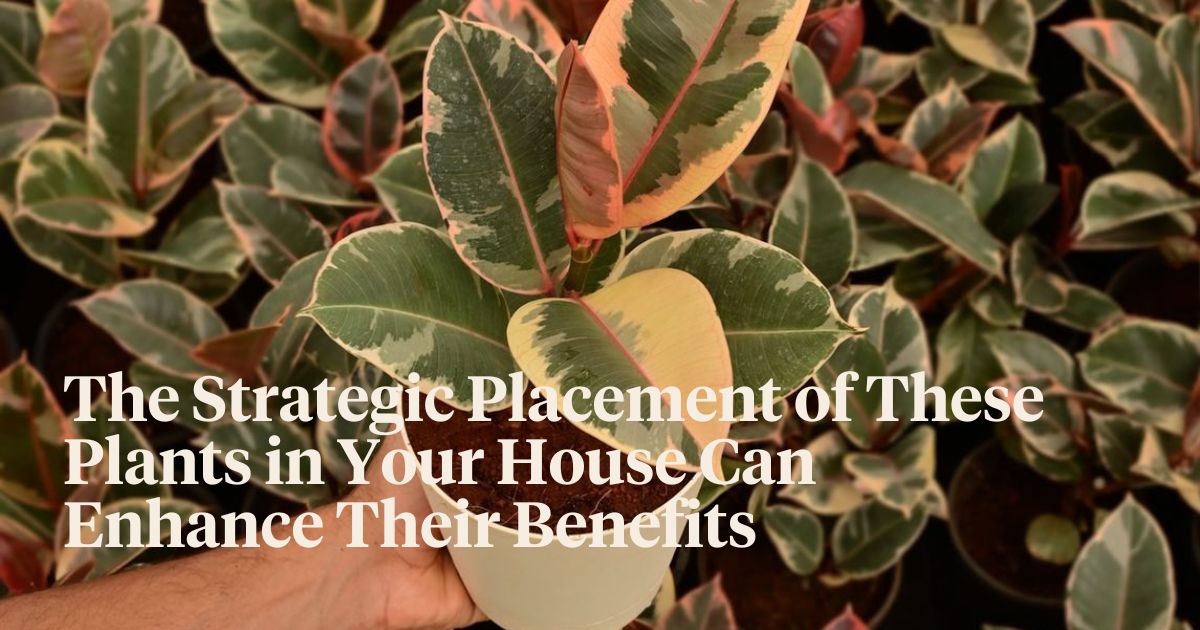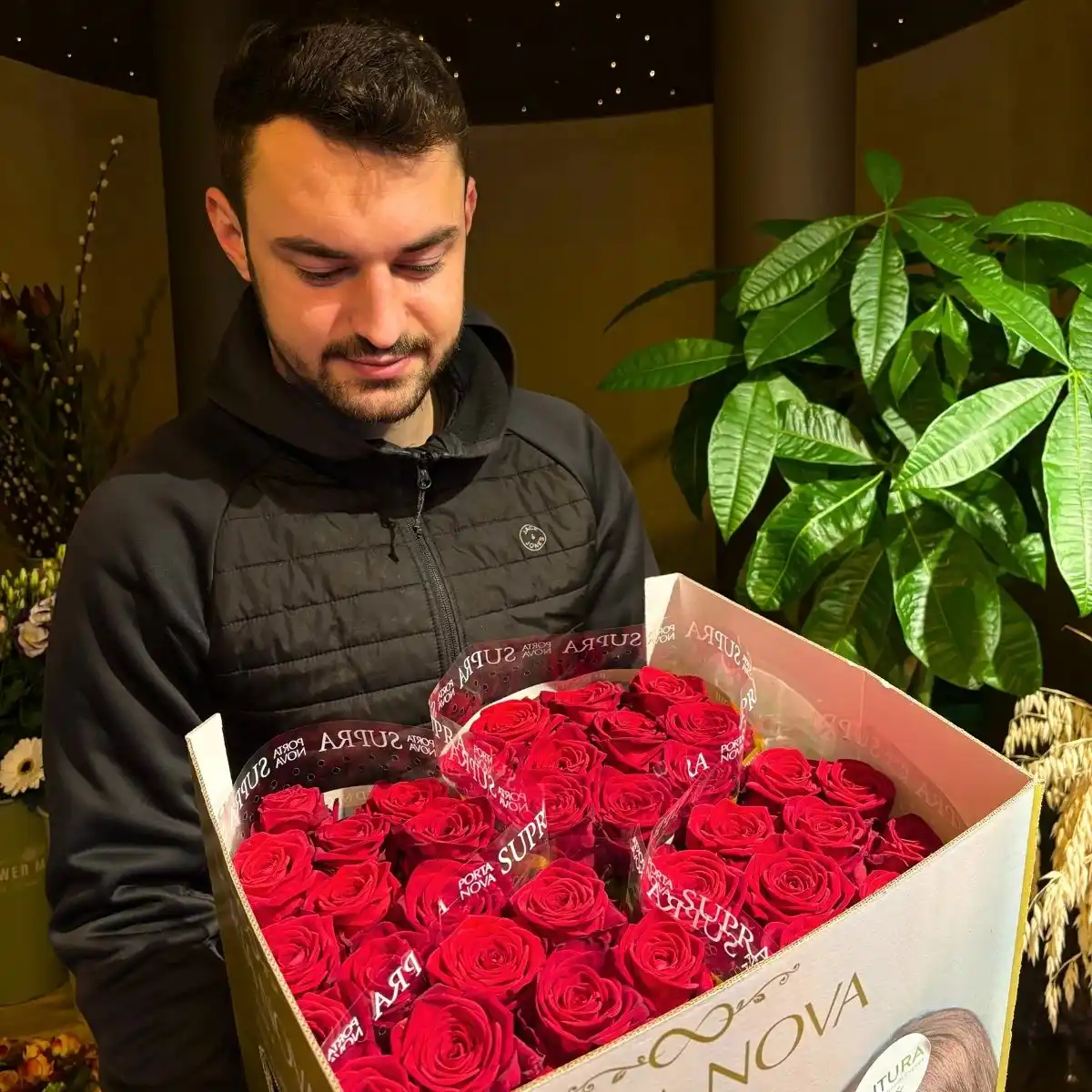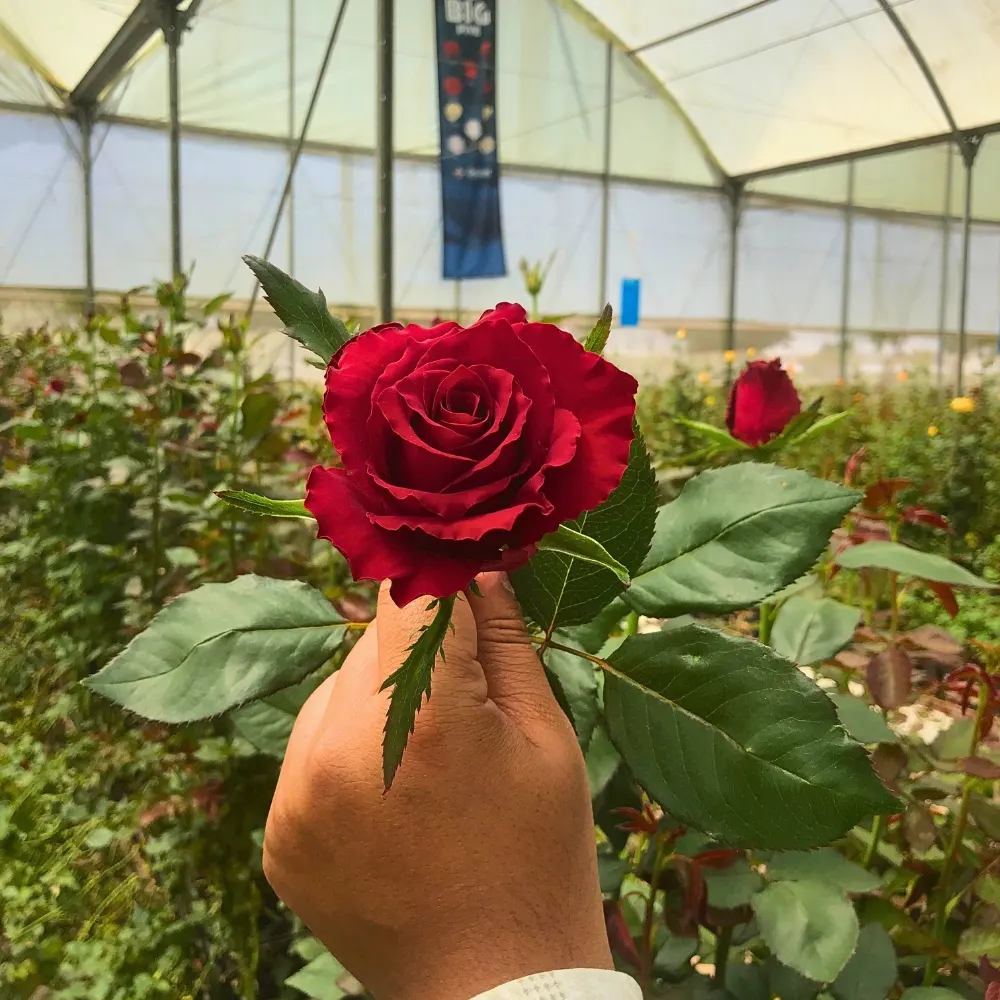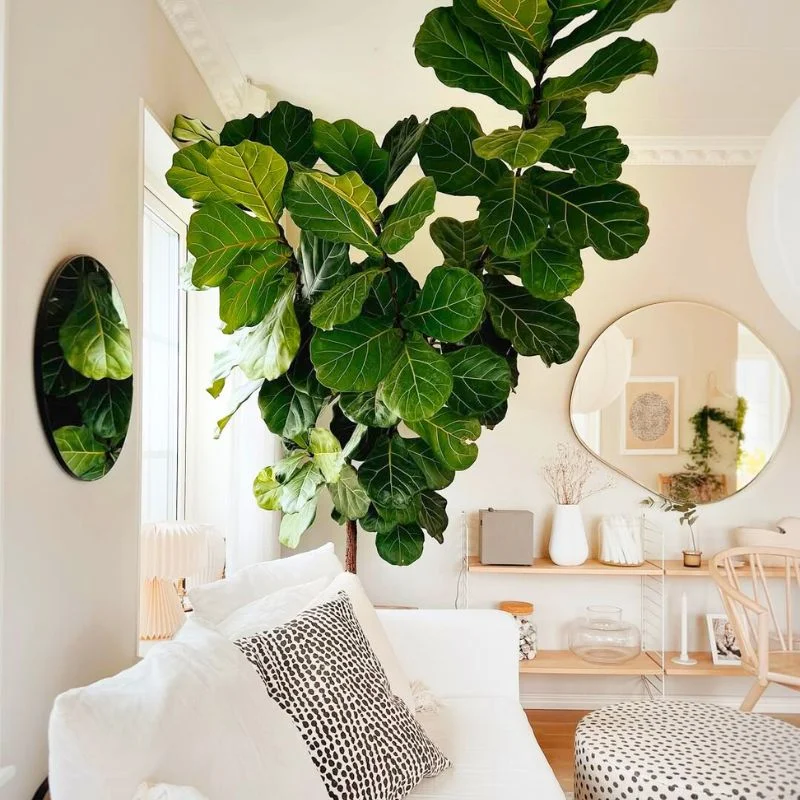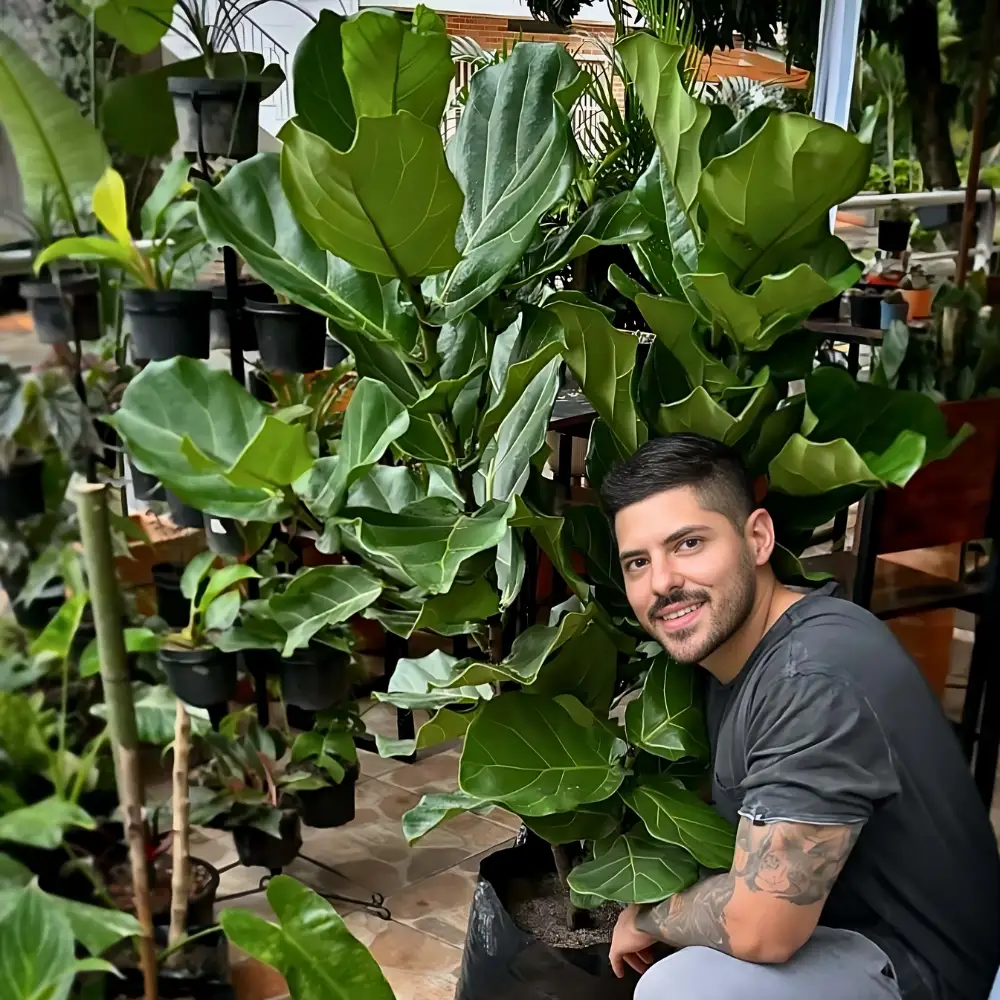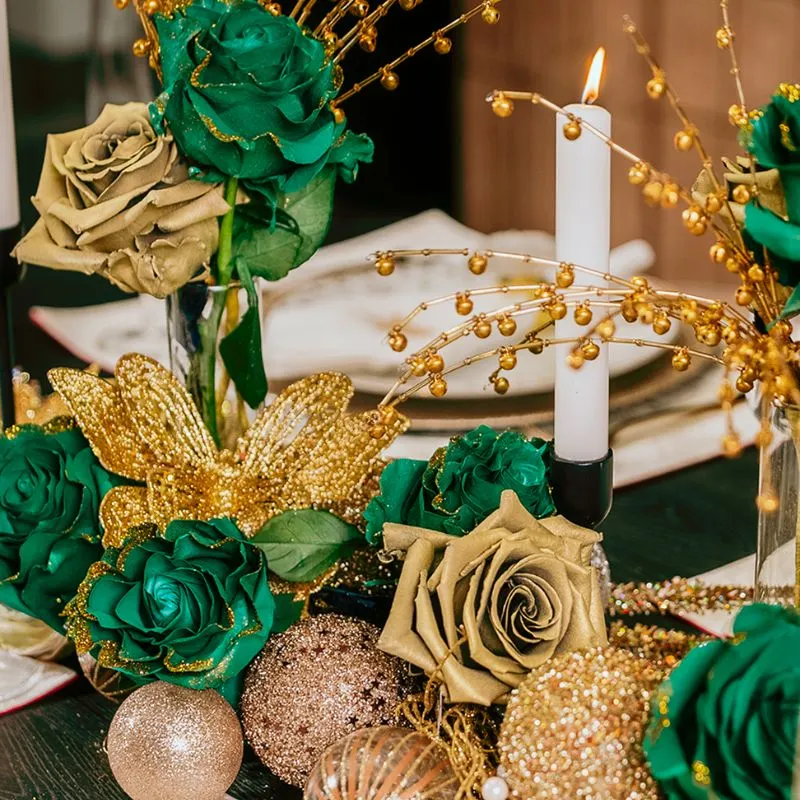Vastu Shastra is an ancient Indian science of architecture that guides us in creating balanced living spaces. Incorporating Vastu plants is one of the most effective ways to bring auspicious energy and prosperity into your living space. These plants are believed to bring good luck and fortune.
According to Vastu, strategically placing these plants in your house can amplify their benefits. From the money plant to the lucky bamboo, here is a list of eleven Vastu plants that offer unique advantages.

Definition and Benefits of Vastu Plants for Happiness and Prosperity
Vastu plants are specific indoor plants chosen according to the principles of Vastu Shastra. These plants are believed to bring balance and harmony to the home. Vastu plants for the home include various types such as the money plant, lucky bamboo plant, and holy basil, each offering unique benefits:
-
Energy Enhancement: These plants are believed to improve the overall atmosphere of your home.
-
Air Purification: Many Vastu plants, like the snake plant and peace lily, are known for their air-purifying qualities, making the air in the house cleaner and healthier.
-
Stress Reduction: Plants such as lavender and jasmine are known for their calming effects, which reduce stress and promote mental wellness.
-
Financial Well-being: Certain plants, like the money plant, are believed to attract wealth and financial stability.
According to Vastu Shastra, incorporating these plants in your home helps reduce stress, improve mental health, and foster a sense of tranquility. Here you can read how gardening and flowers can help your mental health

A Glimpse Into the Origin of the Ancient Wisdom of Vastu Shastra
Vastu Shastra is an ancient Indian practice that dates back thousands of years, rooted in Vedic traditions.
This architectural science emphasizes creating living spaces that align with natural and cosmic energies to bring harmony and overall wellness.
According to Vastu, the layout and design of the house should reflect the balance of the five elements:
- Earth
- Water
- Fire
- Air
- Space
These principles, outlined in ancient texts, guide the construction of homes, temples, and cities to optimize the flow of beneficial energy. Today, Vastu Shastra is also applied in modern architecture, reflecting a blend of tradition and contemporary needs to create spaces that promote wellness.

Historical Background and Evolution of Vastu Shastra
Vastu Shastra's historical background traces back to the Vedic period when it was mentioned in texts such as the Sthapatya Veda, a part of the Atharva Veda. These ancient scriptures emphasized the importance of designing and constructing buildings harmoniously with nature and the cosmos.
-
Vedic Era
The Rig Veda, one of the oldest Vedic texts, references architectural principles and the significance of spatial orientation.
These principles were aimed at creating structures that aligned with natural and cosmic forces.
-
Epic Period
Between 1000 BCE and 500 CE, Vastu Shastra principles became more structured and were incorporated into epic texts like the Ramayana and the Mahabharata.
These texts provided guidelines for planning and constructing various buildings, highlighting the importance of proper orientation, proportions, and materials.
-
Classical Period
During this time, the Vastu Purusha Mandala, a sacred diagram symbolizing the cosmic man, became a foundational concept in Vastu Shastra. This diagram defined the layout and orientation of structures, ensuring they harmonized with cosmic energies.
-
Medieval Era
The principles of Vastu Shastra continued to influence Indian architecture, especially in the design of temples, forts, and palaces.
The Vijayanagara Empire is known for its adherence to Vastu principles in its monumental structures.
-
Modern Revival
Despite a decline during British colonial rule, there has been a modern revival of interest in Vastu Shastra. Today, many architects and homeowners incorporate Vastu principles into their designs, seeking to create balanced living spaces.
Understanding Vastu Shastra's historical evolution helps us appreciate its significance and the benefits it brings to modern life.

Principles of Vastu Shastra
The principles of Vastu Shastra are based on aligning the architectural elements of a home with the five natural elements and the cardinal directions. Key principles include:
-
Orientation and Layout: The house's layout should follow the Vastu Purusha Mandala, a sacred diagram aligning with cosmic energies. The entrance should be placed east or north to welcome positive energy.
-
Balance of Elements: The house should balance the five elements. For example, water elements should be in the northeast, while fire elements like the kitchen should be in the southeast.
-
Space Utilization: Spaces should be uncluttered and used efficiently to allow for the free flow of energy. The center of the house, or Brahmasthan, should be kept open and clutter-free.
-
Natural Light and Ventilation: Ensuring ample natural light and proper ventilation in the house to promote health and wellness.
-
Room Placement: Specific rooms should be located in particular directions. Bedrooms in the southwest, living rooms in the north, and kitchens in the southeast are recommended.
These principles aim to create a living space that promotes health, happiness, and harmony for its inhabitants.
The Role of Vastu Plants in Creating Harmony
Vastu plants are integral to Vastu Shastra, as they are believed to bring balance, purify the air, and enhance the overall ambiance of the home. These plants are considered to be powerful tools for balancing energies within a space. According to Vastu, placing specific plants in designated areas of the house can attract health and happiness.
For instance, the money plant, when placed in the southeast corner, is believed to attract financial abundance. Similarly, the lucky bamboo plant, known for its harmonizing properties, can be kept in the east or southeast to promote peace and growth. Incorporating Vastu plants in your home is a simple yet effective way to align your living space with natural and cosmic energies.

Balancing Energies With Vastu Plants
Balancing energies with Vastu plants is crucial for creating a harmonious home environment. Plants such as the snake plant, mother-in-law's tongue, and holy basil are excellent. To optimize their benefits, these plants should be placed in the east or north of your house. They are believed to bring in positive energy, reduce stress, and enhance overall wellness.
Enhancing Positivity and Prosperity With Vastu Plants
Enhancing positivity and success with Vastu plants involves strategic placement and care of specific plants in your home. The money plant, one of the most popular Vastu plants, is believed to attract wealth and financial stability. Placed in the southeast corner, this plant is considered to bring in good fortune.

The lucky bamboo plant, when placed in the east or north, is known to bring balance and growth. The peace lily, with its air-purifying properties, can be kept in the bedroom or living room to enhance mental peace and clarity.
These plants are ornamental and functional, as they help create a positive and prosperous environment. According to Vastu Shastra, incorporating these plants into your home can significantly impact your quality of life, bringing in good energy. Regular care and proper placement are key to maximizing the benefits of these Vastu plants.
Choosing the Right Vastu Plants for Your Home
Choosing the right Vastu plants for your home is crucial for harnessing their full benefits. According to Vastu, the selection of plants should be based on their ability to attract beneficial energy, improve air quality, and help you .
Consider plants that are easy to care for and suitable for indoor environments. Popular choices include the money plant, lucky bamboo, and snake plant, as they are known to bring balance and harmony. The placement of these plants in the house should also align with Vastu principles to maximize their positive effects.
Plants to Avoid at Home According to Vastu
Not all plants are suitable for Vastu-compliant homes. According to Vastu, certain plants can bring negative energy and should be avoided. Bonsai plants, for example, are considered to stunt growth and should not be kept at home. Cacti and other thorny plants are believed to bring tension and conflicts.

Although soft and fluffy, cotton is also avoided as it is considered inauspicious. Dead or decaying plants should never be kept at home as they attract negative vibes. Plants with milky sap should also be avoided as they are believed to attract bad luck.
Additionally, plants like tamarind and mehndi are not recommended indoors as they are thought to obstruct the flow of positive energy. By avoiding these plants, you can maintain a healthy atmosphere in your home.
Top Twelve Vastu Plants for Home
Selecting the appropriate Vastu plants for your home can enhance joy and success. These twelve plants are considered auspicious, according to Vastu, and are known to bring good vibes and wellness.
The top Vastu plants include tulsi (holy basil), money (or golden pothos), lucky bamboo, snake plant, rubber plant, jasmine, lavender, aloe vera, rose, bamboo palm, and peace lily. Positioning these plants correctly according to Vastu principles can create a harmonious and dynamic living space, promoting overall health and wellness.
1) Tulsi (Holy Basil) - A Sacred Plant
Tulsi, also known as Holy Basil, is one of the most revered plants in Hindu culture and is considered highly auspicious. This plant is often found in the north, east, or northeast direction of the house.
.

Tulsi is one of the most beneficial plants for the home due to its spiritual and medicinal properties. we also have an article on five healing medicinal plants can easily be grown at home. The plant is believed to purify the air and attract positive energy. As per Vastu, tulsi helps to create a peaceful and balanced environment. It is also known for its ability to ward off negative energies and promote good health. Tulsi is considered a sacred plant and is often used in religious rituals and ceremonies.
2) Money Plant - Attracting Wealth
The money plant, scientifically known as Epipremnum aureum, is one of the most popular Vastu plants for attracting wealth and financial stability. This plant is easy to care for and can thrive in various indoor conditions, making it one of the best plants for home.
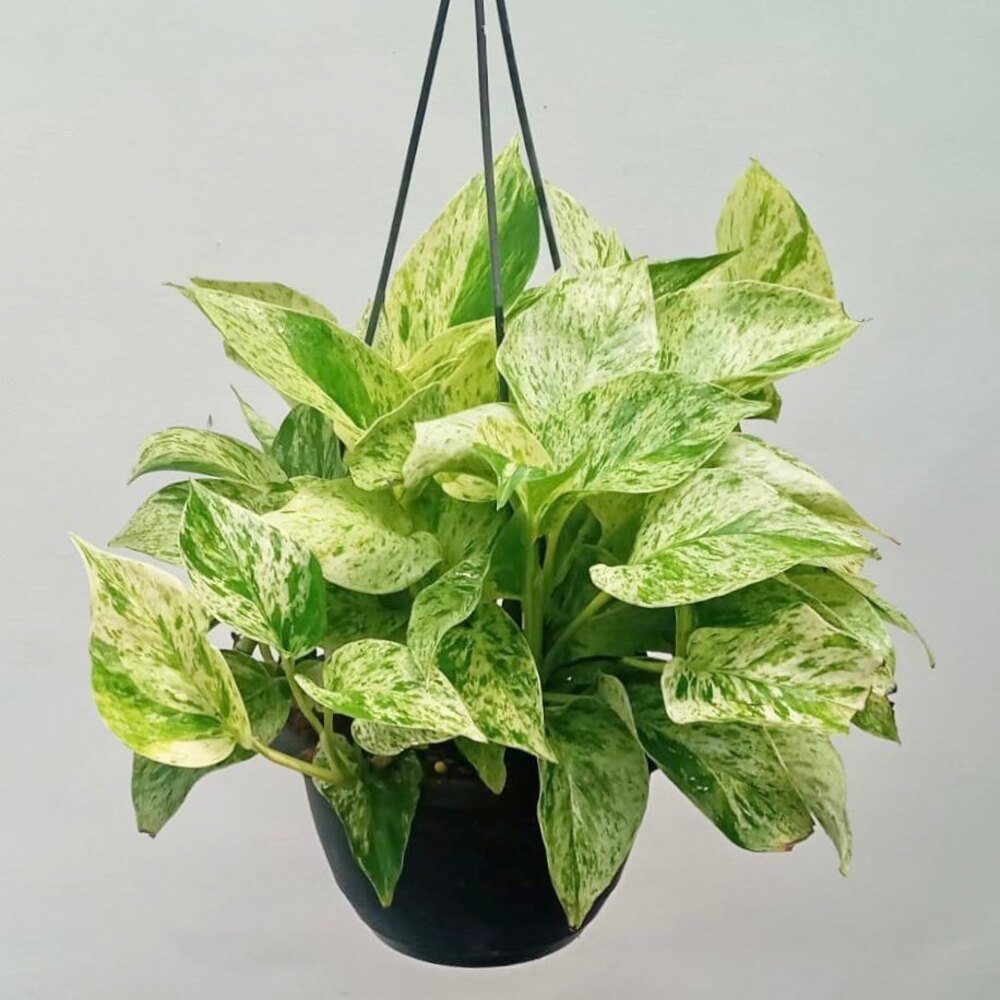
According to Vastu, placing the money plant in the southeast corner of the house helps to attract wealth and success. It is also known for its ability to purify the air, creating a healthier and more vibrant environment. The plant's heart-shaped leaves symbolize financial abundance, and it brings good luck and positive energy to the home.
3) Lucky Bamboo - Bringing Good Fortune
The lucky bamboo, also known as Dracaena sanderiana, is a powerful symbol of good luck and prosperity in both Vastu Shastra and Feng Shui. This plant is easy to grow and can thrive in low light, making it ideal for indoor settings. According to Vastu, the lucky bamboo should be placed in the east or southeast direction of the home to maximize its benefits.

This plant is believed to bring harmony, peace, and growth to the living space. The number of stalks in the lucky bamboo plant also holds significance; for example, two stalks represent love, three stalks signify happiness, and five stalks symbolize health. Incorporating lucky bamboo into your home can help create a balanced atmosphere, promoting overall wellness and success.
4) Snake Plant - Purifying the Air
The snake plant, also known as Mother-in-Law's Tongue, is one of the most effective indoor plants for air purification. This plant is excellent for filtering out toxins from the air, making it a valuable addition to any home.

According to Vastu Shastra, the snake plant can be placed in the north or east direction to maximize its benefits. This plant is known for converting carbon dioxide into oxygen at night, making it ideal for bedrooms. It is also low-maintenance, requiring minimal water and sunlight, which makes it perfect for those who prefer easy-to-care-for plants. The snake plant is considered to bring balance and reduce stress levels, enhancing the overall harmony of your living space. There are 10 other varieties of snake plants that you also need to know about.
5) Rubber Plant - A Low-Maintenance Option
"When Life gets tough, stay rooted like a rubber plant"
The rubber plant, scientifically known as Ficus elastica, is one of the best Vastu plants for home due to its low-maintenance nature and ability to attract balance. This plant is also known for its air-purifying properties, making it an excellent choice for improving indoor air quality.

The rubber plant should be placed in the south or southeast direction to bring good energy into the home. It is also well-suited for placement in the entrance area, where it can welcome good fortune. This plant requires minimal care. It thrives in indirect light and needs only occasional watering, making it perfect for busy households.
6) Jasmine - Filling Your Home With Sweet Fragrance
Jasmine is a beloved plant known for its beautiful, aromatic flowers that can fill your home with a sweet fragrance. This plant is considered one of the most auspicious plants, as per Vastu, as it is believed to attract balance and enhance relationships.

Jasmine is ideal for placing in the entrance or near windows where it can receive ample sunlight. The plant is also good for the bedroom, as its soothing scent can promote restful sleep and a calming atmosphere. Additionally, jasmine is a symbol of love and harmony, making it an excellent choice for fostering a peaceful and loving home environment. To know more about Jasmine you can read our article The Beauty of the Jasmine Flower
7) Lavender - Promoting Peace and Calmness
Lavender is a beautiful flowering plant that is highly regarded for its calming and soothing properties. It is one of the most effective Vastu plants for promoting peace and tranquility in the home. This plant is known for its lovely purple flowers and aromatic fragrance, which can help reduce anxiety and promote restful sleep.

Placing lavender in the bedroom or living room can enhance energy flow and create a serene atmosphere.Lavender is also easy to care for, requiring well-drained soil and moderate sunlight. It is considered a powerful tool for creating a peaceful and harmonious living space, making it an excellent addition to any home looking to foster a sense of calm and relaxation.
8) Aloe Vera - A Healing Plant
Aloe vera is one of the best indoor plants as per Vastu for its healing properties and ability to enhance energy. This plant is renowned for its medicinal uses, such as soothing burns and skin irritations, making it a practical addition to any home.
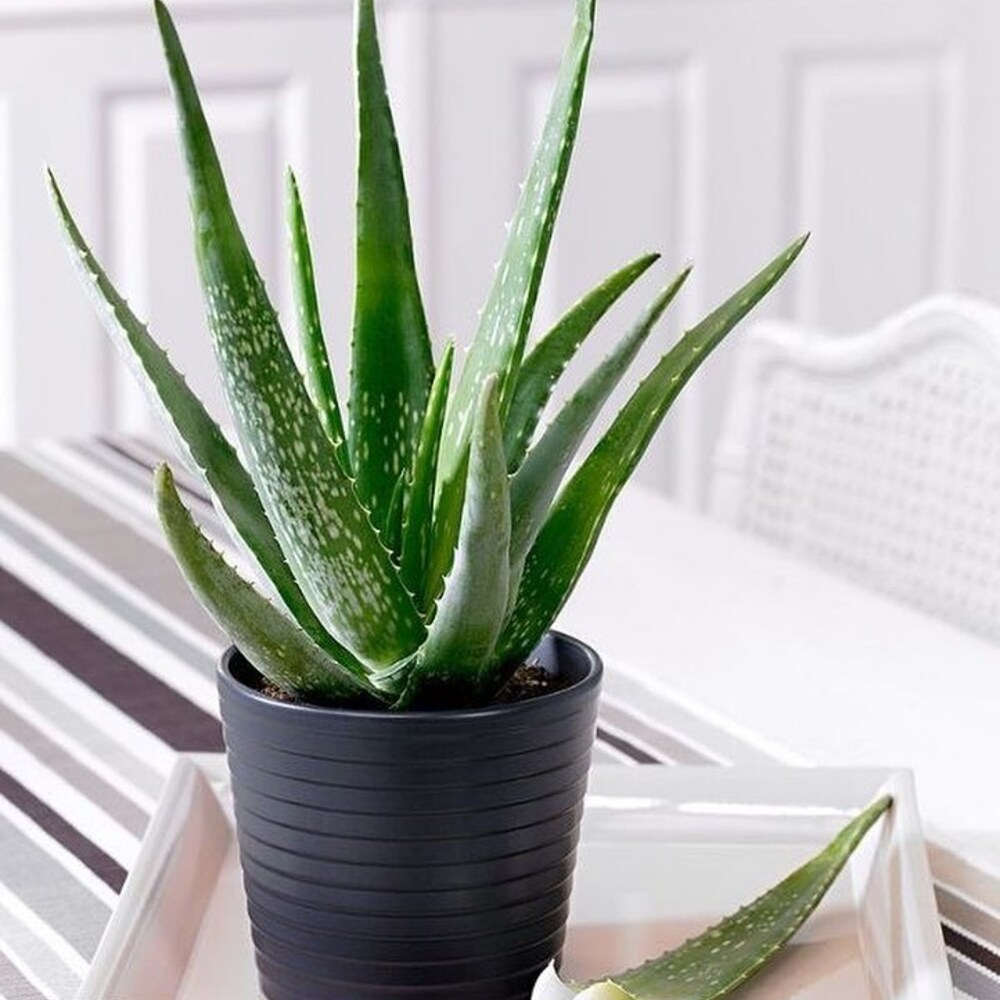
As per Vastu, aloe vera should be placed in the north or east direction of the house to maximize its benefits. The plant is also known to purify the air by removing toxins, thus creating a healthier living environment. Aloe vera is easy to care for and requires minimal watering, making it an ideal choice for those looking to incorporate low-maintenance, beneficial plants in the home.
9) Rose - A Symbol of Love and Beauty
The rose is one of the most celebrated Vastu plants, symbolizing love and beauty. It is considered a powerful plant for attracting energy and enhancing relationships.According to Vastu, placing a rose plant in the south or southwest direction of the house can foster love and harmony among family members.

This plant is also known for its beautiful flower and delightful fragrance, which can uplift the mood and create a serene atmosphere. Roses are the best choice for adding a touch of elegance and warmth to your home while promoting emotional well-being. Regular care, including proper watering and pruning, will ensure that the plant thrives and continues to bring beauty and positivity to your living space.
10) Bamboo Palm - A Lucky Plant for Offices
The bamboo palm, also known as Chamaedorea seifrizii, is considered one of the best Vastu plants for attracting luck, especially in office spaces. It is a popular indoor plant due to its ability to thrive in low light and its effectiveness in purifying the air.
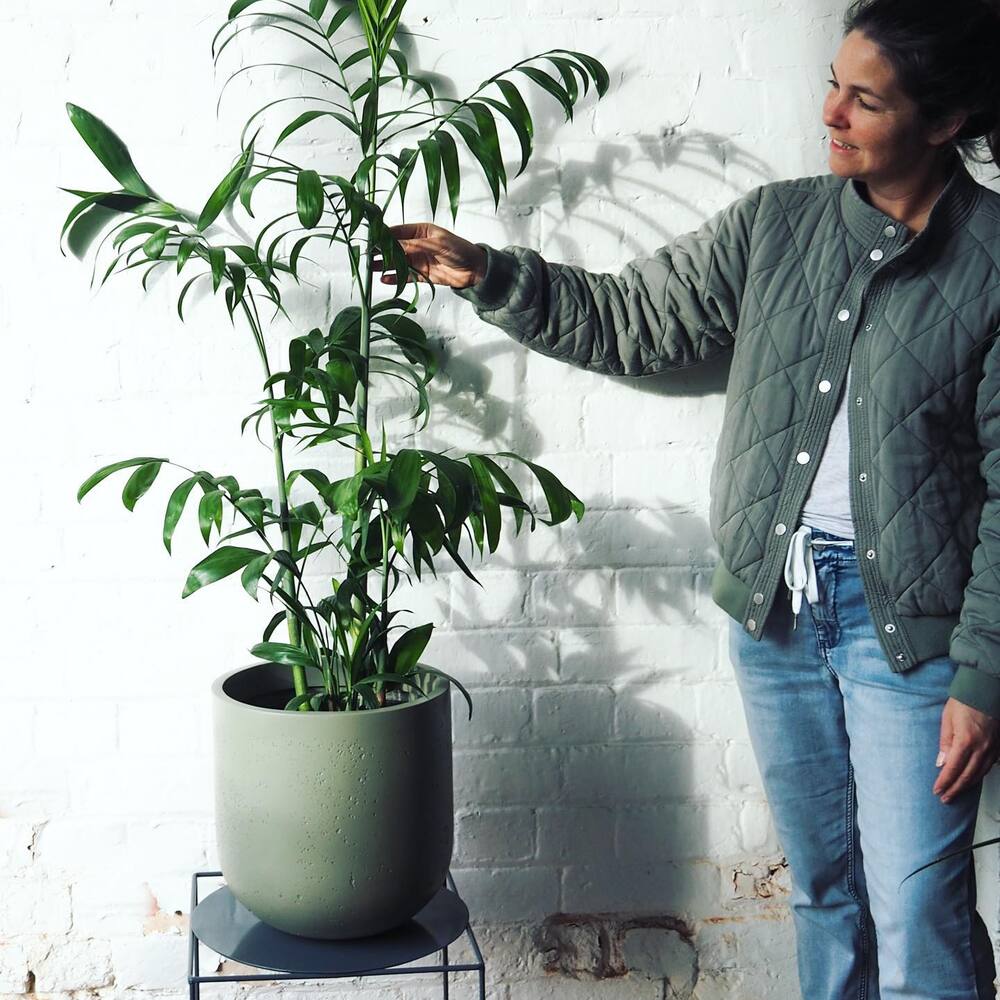
Placing the bamboo palm in the southeast corner of your office or workspace can enhance financial growth and career success. The plant is known for its elegant appearance and its ability to create a calming and productive atmosphere. Bamboo palm is also good for reducing indoor pollutants, making it a healthy addition to any professional environment.
11) Peace Lily - Purifying the Air and Energy
The peace lily, also known as Spathiphyllum, is one of the best indoor plants for purifying the air and enhancing the ambiance in your home. It is known for its elegant white blooms and ability to remove toxins such as formaldehyde, benzene, and ammonia from the air. According to Vastu principles, placing a peace lily in the north or east direction of the house can help create a serene and tranquil environment. This plant is not only beautiful but also easy to care for, requiring minimal sunlight and watering.

It is one of the most effective plants in improving indoor air quality and promoting a sense of tranquility in your living space. Incorporating a peace lily into your home is beneficial for maintaining a harmonious and healthy atmosphere.
Caring for Your Vastu Plants
Caring for your Vastu plants is essential to ensure they thrive and bring the maximum benefits of energy into your home. It is important to understand the specific needs of each plant to maintain their health and vibrancy.
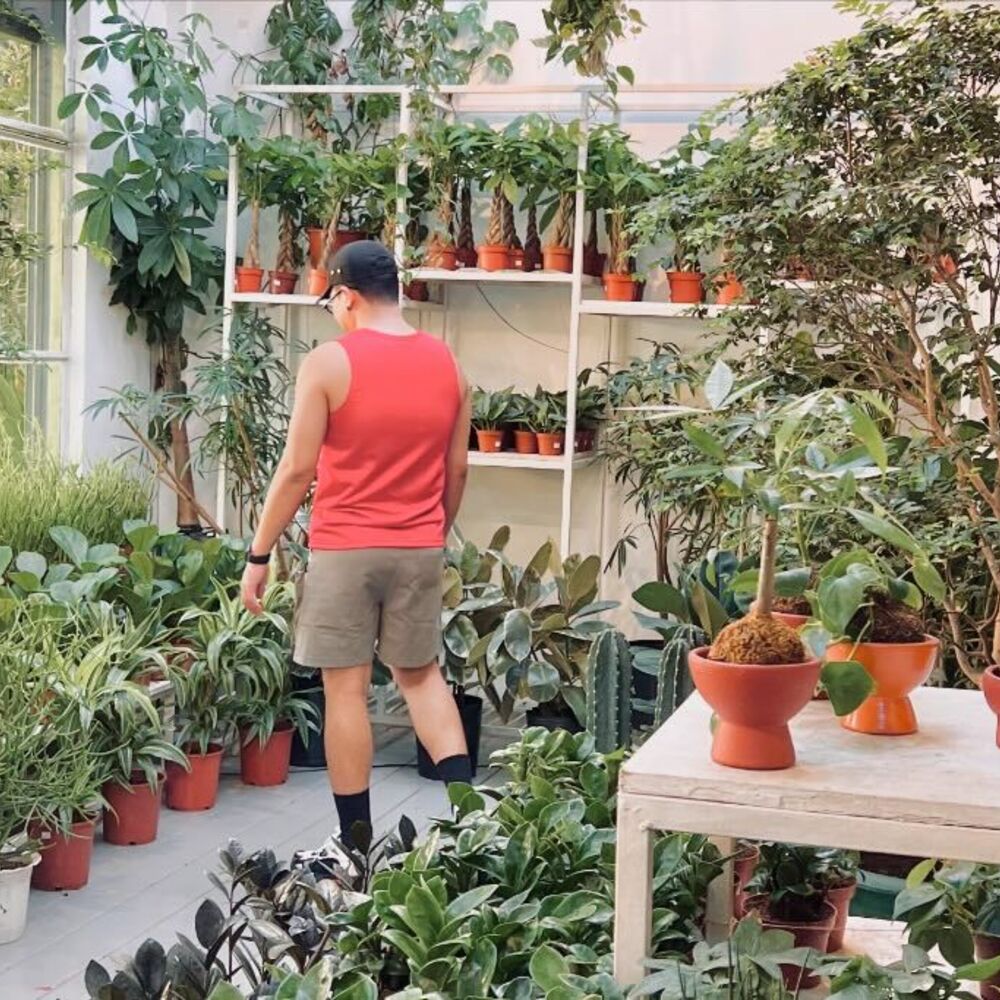
Regular care, including proper watering, pruning, and placement, is crucial for these plants' flourishing. Indoor plants, like the peace lily and golden pothos, require particular attention to their light and water needs. Ensuring they are placed in the right direction as per Vastu principles can enhance their effectiveness in bringing good fortune and harmony. Proper care also involves monitoring for pests and diseases to keep the plants healthy.
Tips for Watering, Pruning, and Decorating With Vastu Plants
Watering, pruning, and decorating with Vastu plants require some basic guidelines to keep them healthy.
-
Watering:
It is essential to water the plants according to their individual needs. For instance, plants like the peace lily require consistent moisture but should not be overwatered. Conversely, succulents like aloe vera need less frequent watering. Ensure the soil is well-drained to prevent root rot.

-
Pruning:
Regular pruning helps in maintaining the shape and health of the plants. Remove any dead or yellowing leaves to encourage new growth. Pruning also helps in controlling the size of the vastu plant, making it suitable for indoor spaces.
Utilize Vastu plants to enhance the decor of your home. Please place them in attractive pots to adorn shelves, corners, and entryways.
Hanging plants like golden pothos can add a touch of greenery to higher spaces, while larger plants like bamboo palms can be used as statement pieces in living areas.
Following these tips ensures that your Vastu plants remain healthy and continue to bring positive energy into your home.
Vastu Plants for Specific Areas of Your Home
Vastu Shastra recommends placing specific plants in different areas of your home to maximize their benefits. Each plant is chosen for its unique ability to harmonize energy and bring positivity to that space.

Indoor plants such as peace lily, aloe vera, and golden pothos are ideal for different rooms due to their varying needs and benefits. Following these guidelines ensures that your home remains balanced, enhancing both the aesthetic and energetic qualities of your living space.
Vastu Plants for the Bedroom
For the bedroom, choosing plants that promote relaxation and tranquility is best. The peace lily is an excellent choice as it purifies the air and fosters a calming atmosphere.

Another great option is lavender, known for its soothing fragrance that helps improve sleep quality. These plants should be placed in the bedroom to create a serene environment, enhance energy, and support restful sleep.
Vastu Plants for the Kitchen Garden
In the kitchen garden, it is essential to select plants that are both practical and beneficial as per Vastu principles. Basil (tulsi) is a must-have, known for its culinary uses and ability to bring positive energy.
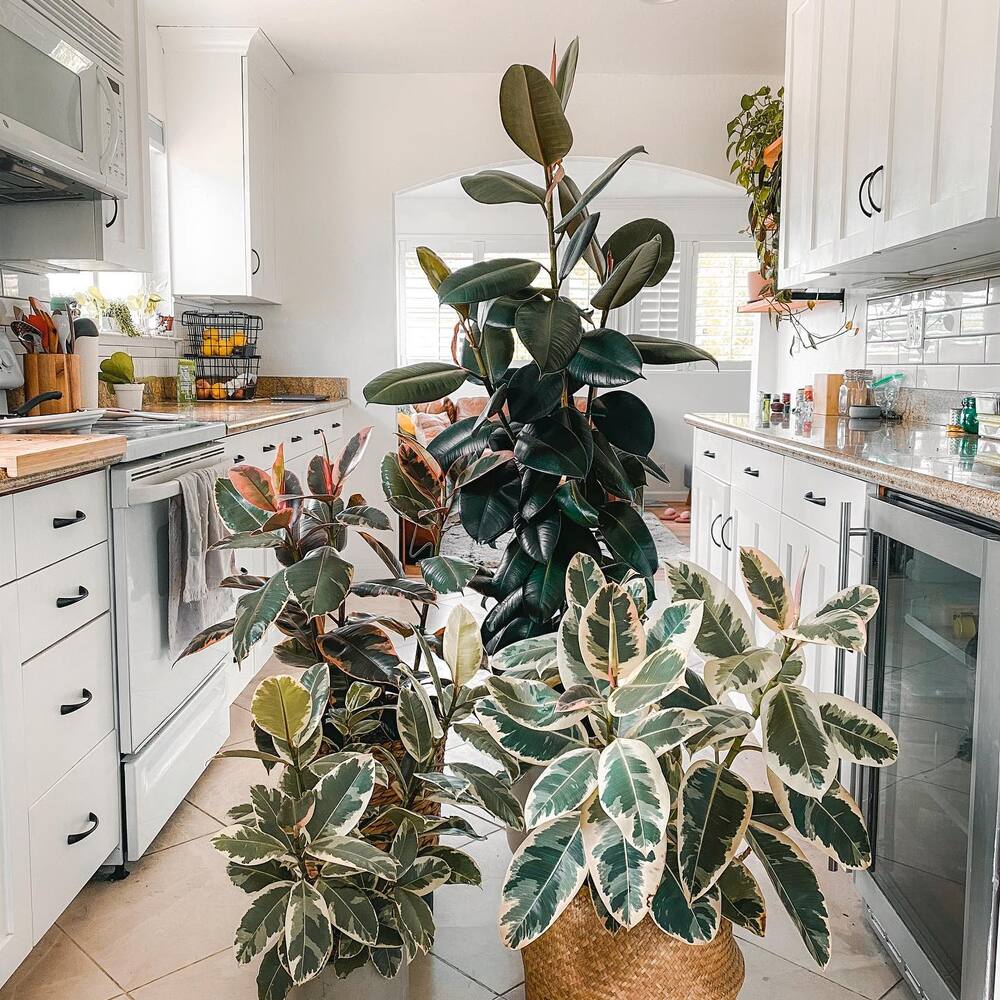
Mint is another excellent choice, providing fresh herbs while promoting health. These plants should be placed in the kitchen garden to enhance the overall energy and utility of the space.
Vastu Plants for the Entrance
The entrance of your home is crucial for inviting good luck. The best Vastu plants for this area include the bamboo palm, known for its auspicious qualities, and the money plant, which attracts wealth. Placing these plants at the entrance ensures that good vibes enter your home, creating a welcoming environment.

Summarizing the Benefits of Vastu Plants in Your Home
Adding Vastu plants to your home offers numerous benefits, enhancing both the aesthetic appeal and energy flow. These plants are good for purifying the air, reducing stress, and promoting overall wellness. According to Vastu, strategically placing plants like the peace lily, money plant, and lucky bamboo plant can attract health and harmony. By following Vastu principles, you can create a balanced and serene living environment that supports the physical, emotional, and financial health of your household.

